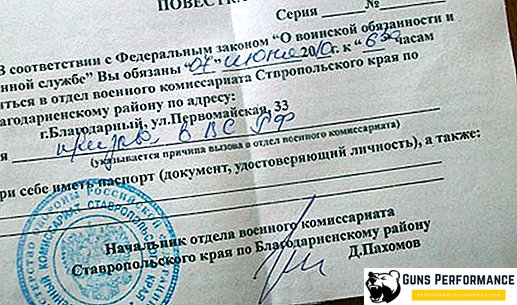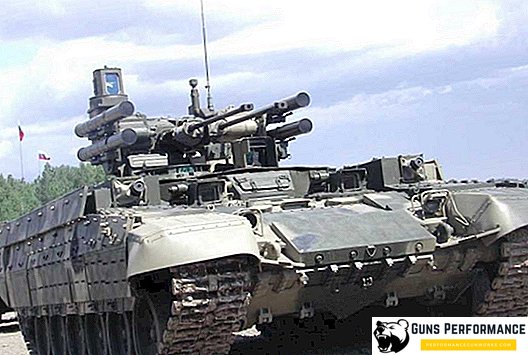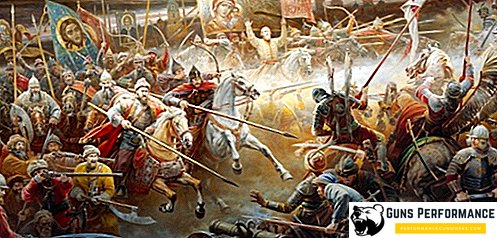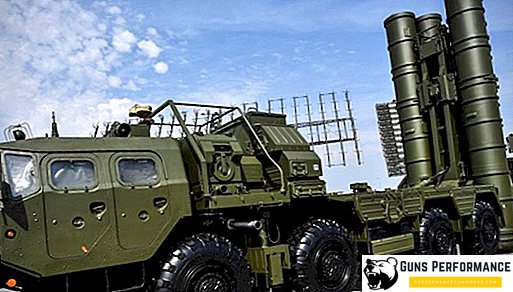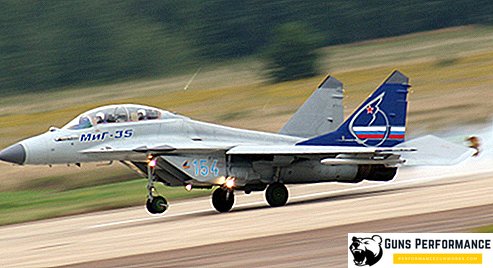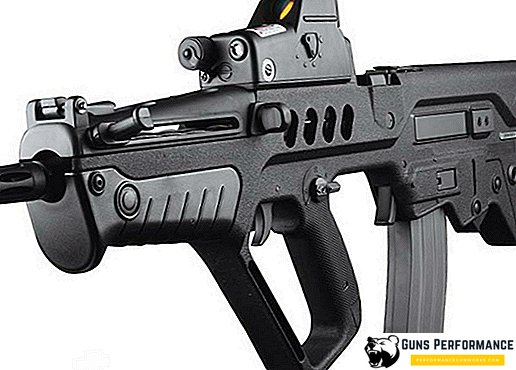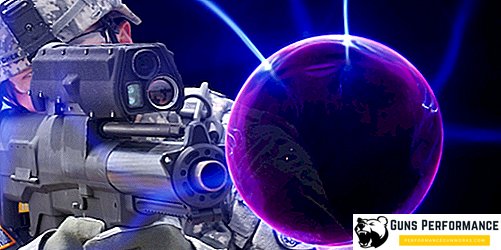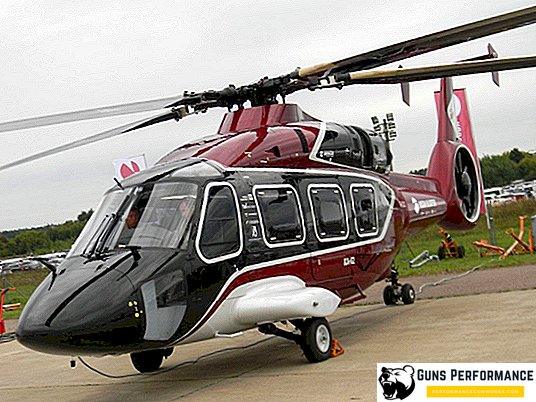
The Ka-62 is a Russian advanced multi-role helicopter, created in the OKB Design Bureau. Kamov, on the basis of the military machine Ka-60 "Kasatka". This is the first Kamovskaya machine, made according to the scheme with one rotor.
Work on the creation of the Ka-62 began in 1990 on an initiative basis, the design bureau designers sought to create a new helicopter with high technical characteristics for civilian use, which could be successfully promoted in foreign markets. However, further development of the machine was suspended due to insufficient funding.
The Ka-62 helicopter has not yet been launched into mass production, despite the fact that this machine is a regular participant in various exhibitions and aircraft salons. The cost of the Ka-62 creation program has already exceeded 3 billion rubles. At present (April 2018), factory testing of the helicopter continues, production of several experimental machines has begun.
Russian officials and the management of the Russian Helicopters holding company have repeatedly stated the imminent start of large-scale production of the Ka-62, as well as great interest in this car from foreign customers. However, year after year, the release of this machine is postponed: recently it became known that the certification of the helicopter is being transferred to 2018.
The Ka-60 and Ka-62 can be called the most "long-running" projects in Russian aviation: the development of the Kasatka began in 1984, that is, more than thirty years ago.

History of creation
In 1984, the Kamov Design Bureau began the development of a medium multipurpose helicopter for the armed forces, which was to replace the outdated Mi-4. The design of the new machine continued until 1990, it received the name Ka-60 "Killer Whale". The financing problems that began during this period seriously hampered the progress of work. In order to attract private investment, the OKB decided to start creating a civilian version of the machine based on the Ka-60.
A new car was originally designed using the latest advances in the field of aviation. For the new car, the engines of the new generation RD-600 were developed, with technical characteristics at the level of the best GTE of that time. The designers paid a lot of attention to the convenience and safety of passengers and crew. The Ka-62 helicopter was conceived in the passenger and cargo version, and in the future it was planned to develop a rescue and medical modification of the helicopter.
The model of the helicopter was first demonstrated to the public during the MAKS-95 aircraft cabin.
After this work on the creation of the Ka-62 for many years almost ceased. Many times the new dates of the start of operation and serial production of the helicopter were voiced. In 2012, the public was presented an updated version of the Ka-62. The new helicopter was equipped with the French engines Turbomeca Ardiden 3G and the transmission of the Austrian company Zoerkler.
Due to the modular design and the advanced digital control system, Ardiden 3G engines were distinguished by excellent performance (primarily low fuel consumption), reliability and ease of maintenance. It is expected that the new power plant will significantly increase the speed of the helicopter (and maximum, and cruising), as well as the ceiling of the car.
Also, the Ka-62 received new landing gear and an extended cargo and passenger cabin.
They are planning to assemble helicopters at Progress AAC, and manufacture components for them at the aircraft plant in Kumertau (KumAPP OJSC).
The Ka-62 helicopter can be operated in a wide range of climatic and geographical conditions, at temperatures from -50 ° C to + 45 ° C and fly in icing conditions and in bad weather. Provides for the operation of the machine from the ground, airfields and oil platforms. The possibility of bezangarny storage of the car is allowed.
It is planned that the Ka-62 can be used for the transport of goods, passengers (including VIPs), maintenance of oil and gas drilling platforms, evacuation of the sick and wounded, and air surveillance.

Description of construction
The Ka-62 helicopter is made according to an uncharacteristic scheme for the Kamov Design Bureau with one main and one tail rotor. The tail rotor is located in the vertical tail (the so-called fenestron). The helicopter has two gas turbine engines and a retractable tricycle landing gear.
Composite materials are actively used in the construction of the Ka-62, they constitute about 50% of the mass of the entire structure.
The fuselage of the helicopter has a shape with good aerodynamic characteristics, its skin is almost entirely composed of composite materials. In front of the fuselage is a double cockpit, behind it is a passenger cabin, above which is a power plant with transmission and main rotor. At the rear of the helicopter is a tail boom with tail and tail rotor.

The cockpit has a large glass area and provides excellent visibility for pilots. The cabin doors open outward and forward.
The middle part of the fuselage is occupied by a cargo and passenger cabin, which has dimensions of 3.3 x 1.75 x 1.3 m, and a large sliding cargo door.

On the tail boom is a rectangular uncontrolled stabilizer with end washers. The tail rotor is in a profiled channel located in the tail boom. Above it is a vertical keel of an asymmetrical profile.
Helicopter tricycle retractable, retractable with tail support. The main landing gear retracts forward and sideways, and the rear support - in the tail boom. Chassis supports are equipped with shock absorbers that are able to significantly mitigate the impact during an emergency landing.
On the landing gear supports can be installed for landing on the water.
The bearing screw with four blades, the sleeve has a split housing made of fiberglass. All-composite propeller blades are equipped with an anti-icing system.
The tail rotor has a rigid mounting of the blades with axial hinges. The nose part of each blade is protected by a titanium end.
The power plant of the helicopter includes two GTE Turbomeca Ardiden 3G (takeoff power - 2 × 1776 hp.). The engines are located behind the main rotor shaft and are closed by a common fairing. Each of them is equipped with a two-channel digital control system.
The helicopter fuel system consists of four soft tanks located under the floor of the passenger-and-freight cabin. Their total capacity is 1100 liters.
The transmission consists of a two-stage main gearbox and a single-stage tail gearbox.
The hydraulic system consists of two autonomous subsystems, one of which ensures the operation of the steering gears, and the second - the landing gear cleaning system.
Ka-62 is equipped with a modern navigation and piloting complex. All data on the operation of the helicopter systems and flight information is displayed on liquid crystal monitors installed in the cockpit.
Orders
It’s too early to talk about commercial promotion of the Ka-62 helicopter. Until the testing and certification phase is completed, the sale of the machine is not possible. However, there is already some interest among potential customers for this helicopter. Although, the final price of this car has not yet been announced.
In 2012, a preliminary agreement was reached between the Russian Helicopters holding company and Atlas Táxi Aéreo from Brazil on the purchase of seven Ka-62s from 2018 to 2018. In addition, the agreement contained a clause on the possibility of the subsequent ordering of another seven helicopters. Since the machine is still not certified, it is likely that this agreement of intent remained on paper.
The media also voiced information about the desire of Colombia to buy several Ka-62 for the national oil company. The deal was to take place in 2018.

Specifications
| Weight, kg | |
| empty | 3730 |
| Max. takeoff | 6250 |
| engine's type | 2 Turbomeca Ardiden 3G |
| power, kWt | 2 × 1776 l. with. |
| Max. speed, km / h | 300 |
| Practical ceiling, m | 5000 |
| Crew | 1-2 |
| Payload: | 16 passengers or 2500 kg of cargo |



